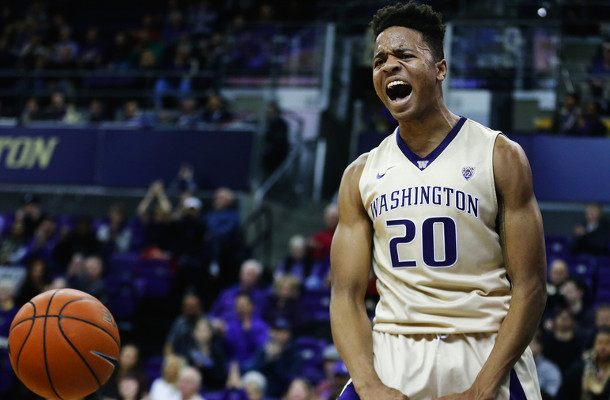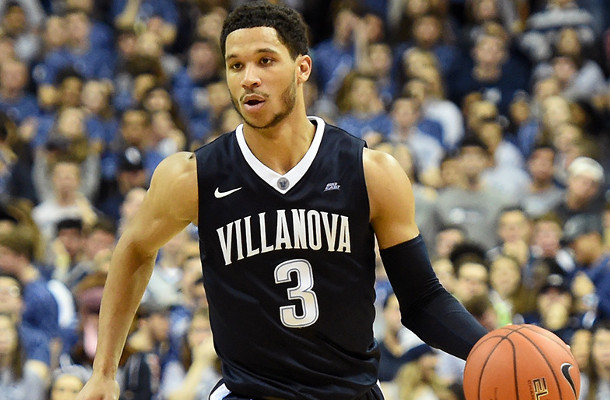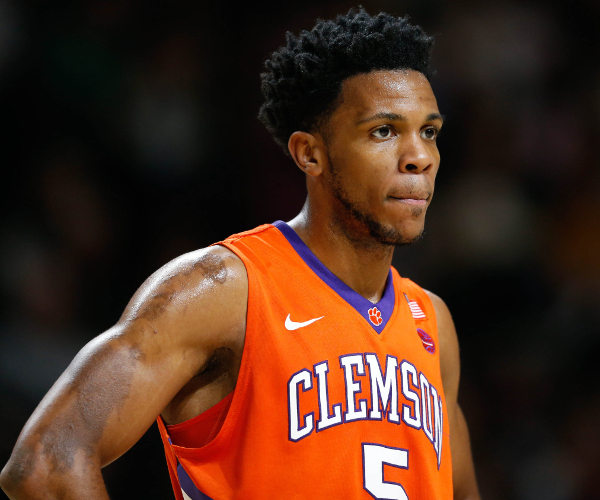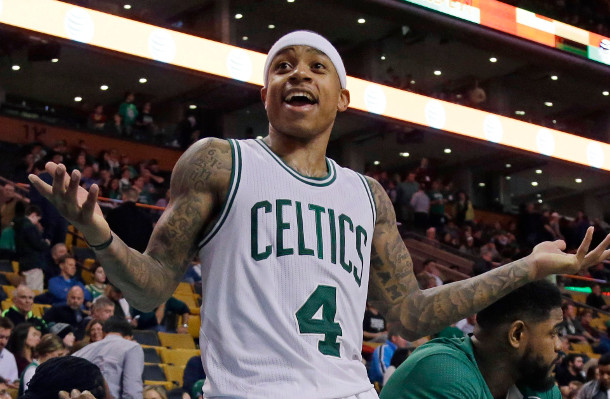Michael Carter-Williams, draft picks, and the fear of the unknown
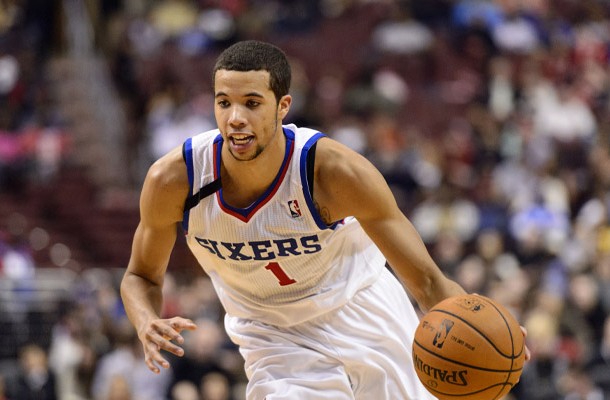
“Medicine is a science of uncertainty and an art of probability.”
– William Osler
Those words were spoken by William Osler, one of the founders of Johns Hopkins Hospital and frequently described as the father of modern medicine.
Replace “Medicine” with “Basketball” and it sounds quite a bit like Sam Hinkie’s philosophy with the Philadelphia 76ers. There’s also a lot of truth to the statement, and certainly more than most people would like to admit.
One of the primary reactions to the Michael Carter-Williams trade, from fans and members of the media alike, has been one of incredulity: how could Sam Hinkie trade a known commodity for another unknown draft pick?
But what does that really mean?
In the discussions between those who are for and against the trade, or the debate about the merits of “The Plan” in general, there are two major points of contention in the above statement. The first point of contention is just how much Michael Carter-Williams is a known commodity.
Sure, Carter-Williams is fresh off of winning a Rookie of the Year award, an accomplishment that will stay on his resume for the rest of his career. But what does that really mean? What does that mean about his current level of play? What does that mean about his fit with Joel Embiid, or whoever they get with the 2015 draft pick?
Just how good is Michael Carter-Williams, currently? John Gonzalez argues that he’s not in the top 20 NBA point guards, and it’s not something I would argue against. His turnovers (only 1.5-to-1 assist-to-turnover ratio in the half-court) and his shooting (27% beyond three feet, only 36% overall in the half-court) are simply killers in today’s NBA.
ESPN took it a step further, polling 25 NBA personnel — including scouts and executives, coaches, and players — and did not list Michael Carter-Williams in their top 30.
Carter-Williams currently ranks 56th among all point guards in ESPN’s Real Plus-Minus. He ranks 149th in win shares among all guards who have played at least 500 minutes, 86th in Boxscore Plus-Minus, and 68th in Value Over Replacement Player. His true shooting percentage of 44.5% is the lowest of all players who have used as many possessions as he has.
| Stat | MCW | Rank | Context |
|---|---|---|---|
| RPM | -2.77 | 56th | All point guards |
| Win Shares | -0.5 | 149th | Guards with more than 500 minutes played |
| Boxscore Plus-Minus | -1.4 | 86th | Guards with more than 500 minutes played |
| Value Over Replacement Player | 0.3 | 68th | Guards with more than 500 minutes played |
| True Shooting Percentage | 44.5% | 24th out of 24 | All players with a usage rate > 26.8% |
Those aren’t just bad numbers, they’re horrific.
As a team the Sixers offense was worse with Michael Carter-Williams on the floor. Significantly worse, actually. The team averaged 91.3 points per 100 possessions in the 1,392 minutes that Carter-Williams played for the Sixers this season against 96.8 points per 100 possessions in the 1,116 minutes that he was on the bench prior to being traded.
| Stat | Before Deadline | After Deadline |
|---|---|---|
| Points per 100 possessions | 91.5 | 94.8 |
| True Shooting % | 49.4% | 49.4% |
| 3pt % | 31% | 34.7% |
| % of field goal attempts from 3 | 30% | 34.7% |
| Assists per turnover | 1.09 | 1.32 |
| Turnovers per 100 possessions | 18.9 | 16.4 |
Not exactly the trend you want to see in your floor general.
And it’s not just the numbers, either. Michael Carter-Williams’ struggles taking care of the ball and his shooting limitations were readily evident on film as well.
Clinging to the known, when the known isn’t good enough, is silly. Trading a below league-average player doesn’t set the rebuild back.
Really, in order to promote keeping Michael Carter-Williams over a potential top-7 pick what you’re doing is arguing for the chance that Michael Carter-Williams will improve. You’re hoping that Michael Carter-Williams will improve.
Chance. And Hope. Because it’s certainly far from a sure thing.
People love to bring up Jason Kidd, now Michael Carter-Williams’ coach and mentor, when talking about Carter-Williams. And Kidd certainly shows that the book isn’t closed when talking about Michael Carter-Williams’ future. Kidd is, however, an edge case, and he’s an edge case for the reason: shooting is far from a certainty to improve.
The Jason Kidd example signifies hope, not a known thing.
The truth is, certainty is an illusion. We are not certain that these picks the Sixers are collecting will ever work out, nor are we sure that the pick the Sixers traded for will ever be in the top 10.
But we are similarly not sure that Michael Carter-Williams will ever improve enough that you can realistically make him a significant contributor in your half-court offense. Just like were were similarly uncertain whether Andrew Bynum or Elton Brand could remain healthy and dominant. And, if recent history is any indication, it is very uncertain whether the Sixers will be able to attract a franchise cornerstone in free agency.
“How you think about uncertainty?,” Sam Hinkie asked members of the media after the deadline. “Do you think about uncertainty as it’s scary, and it’s something to be afraid of, or do you try to look at it and say ‘Where are there opportunities there that can make our team better?’
“It is possible for two things to be really valuable, both Michael and something else, and I believe that,” Hinkie concluded.
It’s possible that Michael Carter-Williams improves his jump shot like Jason Kidd, and It’s possible that Michael Carter-Williams can fit into a half-court offense centered around Joel Embiid. Just like it’s possible that the pick they traded Carter-Williams for can end up in the top-7 in the draft, and with that pick it’s possible that they can draft a difference maker.
The truth is, we don’t live in a world where possibility is all that relevant. It’s probability that reigns supreme.
As fans we are much more comfortable determining the probability of something that we’re familiar with. The more familiarity we have, the more comfortable we are in putting our faith in something that isn’t a sure thing.
In the end, the majority of Philadelphia fans don’t have a problem waiting for the team to be good. Many of the same people who are quick to cry that the Sixers are sacrificing wins this season are more than willing for the Eagles to trade the farm for Marcus Mariota in the draft, even if that means taking a step back during the next year or two. A wasted season is not wasted if it’s used to acquire, and develop, a guy who is capable of leading a franchise for the next decade. A franchise quarterback is that important to the sport.
And while a franchise quarterback is undoubtedly important, so is a dominant player in basketball. Except, in the NFL, with so many players to fit under a harder salary cap, building a dynasty is incredibly difficult. In the NBA, the opposite is true: restricted free agency, the soft salary cap, and the small roster size allows dynasties to be built. All you have to do is grab one or two young studs to kickstart the process.
But the public is much more comfortable projecting NFL quarterbacks than they are NCAA freshman guards, even if their effectiveness in projecting them isn’t all that high. NFL draft picks, even quarterbacks, perhaps especially quarterbacks, taken in the top 5 fail all the time, yet here we are ready to hand over our franchise to an unknown. Not because he is a certainty, but because we’re familiar with him.
Similarly, we’re more comfortable trading for Andrew Bynum or signing Elton Brand because we know them. We’re familiar with them, and that brings us comfort. But that doesn’t mean their future value is a known commodity, and certainly doesn’t suggest that they’re a sure thing, as we all found out.
Both fans and media members alike are far better at measuring past value than we are at predicting future success, and we frequently conflate knowing what a player has done with knowing what a player will do.
We’ve spent far more time watching Michael Carter-Williams over the last few years than we have been watching D’Angelo Russell, and certainly more than we have spent watching Mario Hezonja. Because of that, Michael Carter-Williams represents a known commodity in the eyes of some, even if the improvement he’ll be required to make in order to become as productive as we want is far from a sure thing.
But because it’s unknown to you doesn’t make it more inherently risky, and shouldn’t drive Sam Hinkie’s decisions. He’s watched a lot more tape than you, both in terms of college and international prospects. He’s run the studies on the likelihood of first round picks working out. He knows the history. What we are uncomfortable projecting, he builds his job around.
Just because you are more familiar with Michael Carter-Williams does not mean he has a better chance of becoming great.
But that is what this trade is about. Sam Hinkie didn’t trade Michael Carter-Williams because he’s looking to restart the rebuild. He didn’t move on from Carter-Williams to delay when he’s held accountable, because he wants to lose, or because he fetishizes over the unknown rather than the known.
He traded Michael Carter-Williams because what he views as probable – from the probability of Carter-Williams improving to the probability of landing a star talent at the top of the draft – is different than what you view as probable.
Because, truth is, both paths were far from known.


